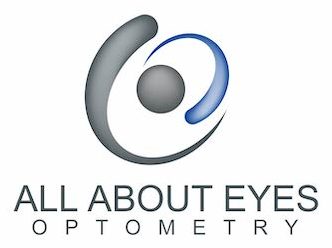Eye Exams for Contact Lenses

Have you been thinking about switching to contact lenses? With contact lenses, you’ll never have to worry about rain-speckled lenses, frames that slide down your nose, or lost or broken eyeglasses.
Contacts are particularly suited to people who lead active lifestyles, especially if you play sports. Not only are they a safer option, but you also won’t have to worry about your glasses getting bent or broken.
Then there’s the flexibility that contacts provide: They go with everything in your wardrobe while boosting your confidence.
But the only way to gain all the benefits from contact lens wear is to make sure your lenses fit well — so they aren’t constantly popping out of your eyes or causing eye discomfort or irritation.
What is a Contact Lens Exam?
A contact lens exam includes a series of tests to assess your candidacy for contact lens wear.
This specialized exam will not only measure your cornea and optical prescription but give your eye doctor a chance to learn about your lifestyle habits and personal preferences regarding wearing contact lenses.
There are many different types of contact lens options: soft lenses, rigid gas permeable lenses, bifocals, multifocals, dailies, bi-weeklies, monthlies, and extended wear options — not to mention all the specialty lenses designed for dry or hard-to-fit eyes.
After learning more about you and your eyes, you’re eye doctor will be able to recommend the most appropriate type of contact lenses for you.
What’s the Difference Between a Regular Eye Exam and a Contact Lens Exam?
A regular eye exam assesses your eye health and visual acuity. Regular eye exams are important but don’t include tests specifically designed for first-time contact lens wearers or their follow-up assessments.
A contact lens exam determines whether you’re a good candidate for contact lenses and pinpoints your contact lens prescription, which is different from your eyeglass prescription. Based on the results, your eye doctor can prescribe the contact lenses that best suit your needs.
What to Expect During a Contact Lens Exam
During your contact lens exam, you’ll discuss any specific lifestyle habits or eye conditions that could affect your ability to wear contact lenses comfortably.
Be sure to tell your eye doctor if you’re considering colored contact lenses, bifocal or multifocal lenses, or a combination of multifocal and monovision lenses.
What Happens During a Contact Lens Fitting?
One size does not fit all when it comes to contact lenses.
Contact lenses that don’t fit properly can cause discomfort, blurry vision and even damage your eyes.
To ensure that your contact lenses fit your eyes’ unique curvatures, your eye doctor will take some measurements of your cornea, pupil and iris.
Corneal Curvature
The curvature of your cornea, the clear front covering of your eye, will be measured with an instrument called a keratometer to determine the appropriate curve for your contact lenses.
If you have astigmatism, your cornea has a flatter corneal curve that can make it difficult to wear standard contact lenses. Your eye doctor may recommend a ‘toric’ lens instead, which is designed to fit more securely on an astigmatic eye.
Sometimes, a corneal topography is performed to measure the corneal surface in greater detail.
Pupil or Iris Size
The size of your pupil and iris — the colored part of your eye — will be measured with a biomicroscope or slit lamp, or in some cases, with a ruler or card.
This measurement is especially important if you’re considering gas permeable (GP) contact lenses.
Tear Film Evaluation
One of the most common problems that affect contact lens wear is dry eyes.
If your eyes are dry, wearing contact lenses can be extremely uncomfortable, or even impossible.
Your eye doctor will therefore evaluate your tear film to make sure that you’re producing enough tears to keep your contact lenses moist and comfortable.
During this test, your eye doctor will put a drop of liquid dye on your eye and then assess your tears with a slit lamp, or place a special strip of paper underneath your eyelid to see how much moisture is absorbed.
If your tear film is weak, your eye doctor may recommend a specific type of contact lens that’s specially designed to help maintain eye moisture and hydration.
What Are Trial Contact Lenses?
After all of your measurements are taken, your eye doctor may give you a pair of contact lenses to try on. They may insert them in your eyes or show you how to do it yourself. Once they’re in your eyes, your eye doctor will wait about 20 minutes to see how well they fit and how well you can see while wearing them.
It can sometimes take several trials until you find the pair of lenses that fit you best.
Your eye doctor will then order your new contact lenses, and give you detailed instructions on how to handle and care for your contacts to ensure that they remain clean and safe for your eyes.
If you’re new to contact lenses, you may feel uneasy about inserting and removing them. Rest assured that ‘practice makes perfect.’ You’ll become a pro within a few days.
How Often Do You Need a Contact Lens Exam?
After about a week of wearing your trial lenses, your eye doctor will want to check how your eyes are adjusting to your new lenses.
If you’re experiencing any discomfort or dryness in your eyes, don’t wait until your follow-up appointment to have your eyes examined. Your eye doctor may decide to try a different type of lens, recommend another brand of contact lens solution, or adjust your wearing schedule.
To find out if you can benefit from contact lenses, contact All About Eyes Optometry in Oxnard today to schedule your contact lens exam.

